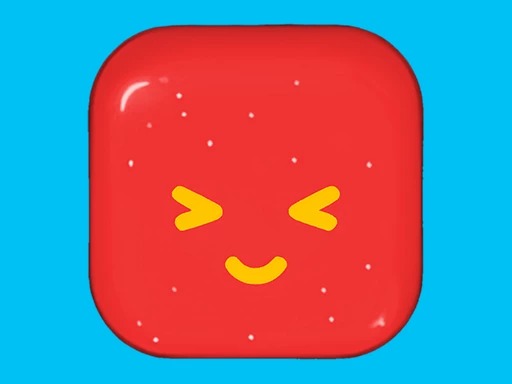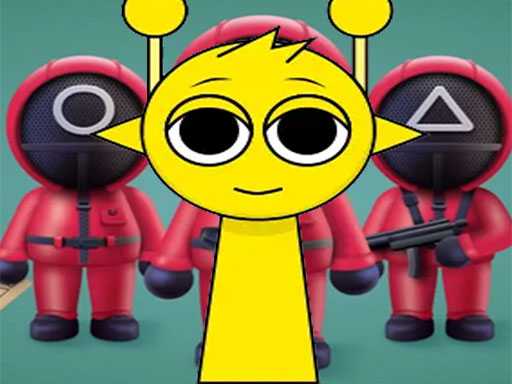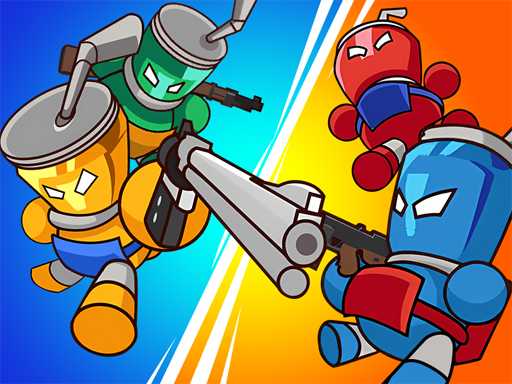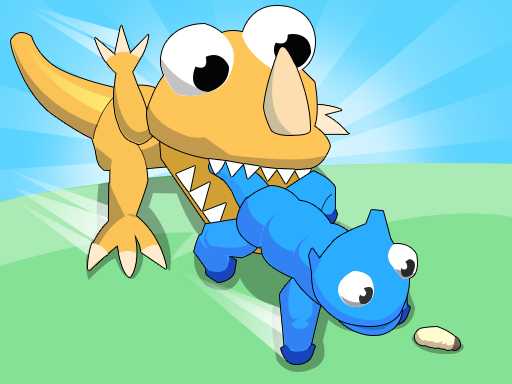
Welcome to the Wonderful World of Bursting Cubes
You know that satisfying moment when you pop bubble wrap and can’t stop? That’s exactly what it feels like to play this match-two puzzle game—except with colors, strategy, and a ticking clock daring you to do better.
The premise is simple enough to explain at a family dinner: “Click on two or more identical cubes to make them burst.” That’s it. Easy, right? But then someone adds, “Oh, and you’ve only got twenty moves… or thirty seconds.” Suddenly, Grandma’s leaning forward.
With more than a hundred levels, each introducing new twists, this game is more than idle fun—it’s a test of pattern recognition, focus, and calm under pressure. It’s the kind of game you pick up “just for five minutes,” only to look up an hour later with a sheepish grin and sore thumbs.
What I love most? It’s deceptively relaxing and sneakily challenging. You can coast through the first ten levels feeling like a genius, and then Level 11 drops a timer on you that turns your screen into a race against logic.
But let’s not get ahead of ourselves. Before we talk about mastering the art of cube-bursting, let’s understand what’s really happening behind those cheerful explosions of color.
The Colorful Mechanics Behind the Mayhem
Every great puzzle game starts with a simple rule that spirals into delightful complexity, and this one’s no exception.
The Playing Field
Imagine a grid filled with bright, colorful cubes—red, blue, yellow, green, purple—just waiting for your tap. Two or more identical cubes that touch vertically or horizontally can be burst with a single click. The more cubes you burst at once, the higher your score and the better your bonus.
When a group pops, the remaining cubes slide down to fill the gaps, creating new matches—or sometimes chaos.
The Mission
Each level gives you a specific goal: clear a certain number of cubes, reach a target score, or complete the board within a restriction. Some levels limit the number of moves you can make, while others challenge you with a countdown timer.
And then there are the bonus cubes—bombs that appear randomly to spice things up. Some clear entire rows, others explode columns, and the rare colored bomb wipes out every cube of one color.
“Oh look, a bomb! That’ll help me out.”
Famous last words.
Because sometimes those bonuses appear right where you don’t want them—and trigger chain reactions you didn’t plan for. But that’s what keeps it fun: you’re always balancing control with a little chaos.
It’s logic meets luck, strategy meets sparkle.
Now that you’ve got the mechanics down, let’s talk about how to turn that random rainbow of cubes into your playground.
Cracking the Cube Code: How to Play Like a Pro
Once you’ve played a few rounds, you start noticing patterns. The trick to mastery lies in anticipation—seeing potential matches before they form.
Think Before You Burst
Beginners often tap the first cluster they see. But experts? They pause. They scan. They visualize what will happen when those cubes fall.
The rule of thumb: never burst cubes without a purpose. Every move affects the next.
Manage Your Moves (and Your Mind)
In move-limited levels, efficiency is everything. Sometimes a small three-cube burst opens a path for a ten-cube combo below. Other times, restraint is key—skip a move now to earn a bigger payoff later.
In timed levels, though, your focus shifts. It’s about speed, yes, but also rhythm. You can’t afford hesitation, yet one wrong click can cost precious seconds.
Here’s a quick reference table to help you strategize across level types:
| Level Type | Main Limitation | Key Strategy | Bonus Tip |
|---|---|---|---|
| Move-Limited | Fixed number of moves | Plan ahead, look for chain reactions | Save bombs for late-stage clears |
| Time-Limited | Countdown timer | Keep moving; don’t overthink | Focus on large clusters first |
| Mixed Objective | Score + restriction | Balance speed and efficiency | Use colored bombs strategically |
| Bonus Levels | No restriction | Experiment freely | Practice new techniques here |
When you start thinking in patterns instead of panic, everything changes. You’re no longer reacting—you’re conducting a symphony of colorful chaos.
Now that we’ve unlocked the strategic layer, let’s dig deeper into what makes this game so brilliant for players of all ages.
One Game, Many Players: Why Everyone Loves a Good Pop
One of the game’s quiet superpowers is its universality. It doesn’t matter whether you’re a ten-year-old learning to think ahead or an adult sneaking in a stress-relief session after work—bursting cubes feels good.
For Kids: Learning Disguised as Fun
Kids might just think they’re playing with colors, but this game is a stealthy little teacher. It builds pattern recognition, logical sequencing, and spatial reasoning—all essential cognitive skills.
Parents love it because it’s screen time that actually exercises the brain. The challenge scales naturally, helping kids develop problem-solving abilities one tap at a time.
Ever noticed how children lean forward as the cubes fall faster? That’s focus—real, active engagement. Games like this are practically mini brain gyms. (Even the experts at Khan Academy emphasize the importance of visual puzzles in developing early logic.)
For Adults: A Slice of Sanity
Then there are us grown-ups. For adults, this game becomes an oddly satisfying stress reliever—a quick escape from emails, errands, and endless notifications. The simplicity is its secret sauce.
You can play while waiting in line, sipping coffee, or taking a mental breather. Each pop gives a small dose of joy, a little “win” that keeps you smiling.
And somewhere between matching colors and chasing bonuses, you realize: this game isn’t just a pastime. It’s therapy with cubes.
Now that everyone’s in on the fun, let’s take a closer look at what separates the casual clicker from the true cube maestro.
The Psychology of the Pop: What Makes It So Addictive
There’s something deeply human about wanting to organize chaos. When you clear the board in a perfect chain reaction, it feels right.
Instant Gratification, Endless Curiosity
Every tap gives immediate feedback—colorful explosions, sound effects, and combo counters lighting up your screen. That’s your brain’s reward system getting a tiny hit of dopamine.
Ever found yourself saying, “Just one more level”? That’s because each round ends with a mix of satisfaction and curiosity: Could I do that faster? Could I get a higher score?
Controlled Chaos
The balance between order and randomness is key. The grid looks predictable, but the way cubes fall introduces surprise. It’s like playing chess with gravity—familiar yet unpredictable.
And that unpredictability keeps your brain alert. It’s part reflex, part strategy, and all delight.
Now that you understand the psychology behind your cube obsession, let’s arm you with techniques that will take your gameplay from good to great.
Building Your Burst Strategy
Great players don’t just react—they plan. They understand the power of momentum, positioning, and restraint.
Layered Thinking
Always look at the entire board before your first move. Identify large clusters and potential chain reactions. Think three steps ahead.
“You don’t pop cubes—you set them up to pop themselves.”
Bomb Management
Bonuses can save your game or sabotage it. Handle them wisely.
- Vertical bombs clear columns—great for stacking chain reactions.
- Horizontal bombs clear rows—perfect for level resets.
- Colored bombs remove all cubes of a single color—ideal for unclogging stuck sections.
Combo Planning
A chain reaction that clears half the board isn’t luck—it’s foresight. Use gravity to your advantage. When you remove cubes on one side, visualize how the others will fall.
Here’s a golden tip:
Always trigger your biggest combos second, not first. The first clears space, the second multiplies points.
And since every smart strategy deserves quick reference, here’s a list you’ll want to remember.
Key Strategies for Puzzle Dominance
- Scan before you tap. Study the board’s layout before making your first move.
- Chase clusters, not colors. Focus on size and placement, not your favorite hue.
- Use bombs last. Save them for emergencies or endgame plays.
- Think in columns. Remember, gravity drops cubes downward—plan accordingly.
- Stay calm under timers. Panic leads to misclicks; focus beats frenzy.
- Chain reactions = free moves. Master them, and the game rewards you big time.
Implementing even a few of these transforms the game from frantic clicking to strategic orchestration.
But success isn’t just about technique—it’s about patience and mindset.
When the Board Fights Back: Dealing with Frustration
We’ve all been there. You’re one cube away from clearing the level, and the board refuses to give you a match. It’s like it’s mocking you.
Frustration is part of the game’s charm. It tests not just your logic, but your emotional control.
Embrace the Challenge
When you lose, don’t rush the replay button. Take a breath. Look at the board pattern that stumped you. What could you have done differently? The best players learn more from failure than victory.
Mini-dialogue moment:
“That level was impossible!”
“Or maybe it was a test of patience.”
“I failed both.”
Avoid Burnout
Play in bursts (pun absolutely intended). The game rewards focus, not fatigue. After three tough rounds, take a short break. When you return, you’ll spot opportunities you missed before.
And remember, every puzzle is designed to be solvable. You just haven’t found that move yet.
Now that you’re mentally equipped, let’s talk about what keeps the experience fresh through more than a hundred levels.
The Long Game: Progression and Rewards
If you’ve ever wondered how a simple puzzle game stays engaging past Level 50, the secret is progression design.
Scaling Difficulty
Early levels teach you basics. Mid-levels mix time and move limits. Later levels combine restrictions and introduce complex shapes. It’s a slow, satisfying ramp-up that makes you feel smarter with each victory.
Visual Variety
No two levels look the same for long. The developers mix up colors, patterns, and even cube behaviors to keep your brain guessing. You’ll encounter tricky layouts that force you to think diagonally or plan across corners.
Achievement and Motivation
Every few levels, you hit a milestone—high score badges, visual fireworks, or a playful “Excellent!” banner. These micro-rewards keep you motivated, like cheering crowds in your pocket.
According to Game Developer, progression systems that blend skill and surprise are key to long-term engagement—and this game nails that balance.
And just when you think you’ve seen it all, a new mechanic appears: shifting cubes, reshuffled rows, or fresh bonus types. It’s a reminder that mastery never ends—it evolves.
The Emotional Side of Play
Here’s something we rarely admit: puzzle games make us feel something.
There’s pride in perfect clears. Relief when the last cube vanishes. Laughter when bombs misfire spectacularly. Even nostalgia—because the mechanics echo the block games many of us grew up with.
Have you ever noticed how your mind quiets when you’re deep in a tough level? That’s focus. That’s flow. Psychologists call it deep engagement—a meditative state where you’re fully present.
In that moment, the game stops being pixels and turns into a rhythm, a heartbeat of strategy and satisfaction.
And when you finally beat that impossible level after fifteen tries? You don’t just celebrate—you feel earned joy.
Beyond the Screen: What the Game Teaches Us
Surprisingly, the lessons of this match-two world extend beyond the board.
- Patience pays off. You learn to pause before acting.
- Mistakes are feedback. Every loss highlights a smarter next move.
- Adaptability matters. Strategies that worked yesterday might fail today—and that’s okay.
Games like this quietly build resilience and adaptability—traits valuable far outside of gaming. They teach problem-solving under pressure, reward perseverance, and remind us to enjoy progress over perfection.
So yes, it’s “just a puzzle game,” but it’s also a training ground for focus, logic, and joy.
The Final Pop
At its heart, this match-two puzzle game is more than a pastime—it’s a pocket-sized adventure in strategy, patience, and delight.
Each cube you burst, each level you conquer, is a mini celebration of problem-solving. Whether you’re a kid sharpening logic skills, a parent unwinding, or a competitive strategist chasing perfection, there’s magic in those bursts of color.
So go ahead—open the game, pick a level, and start tapping. Listen to that satisfying pop, watch the colors swirl, and smile.
Because in the grand puzzle of life, sometimes the best move is simply to play.
For Your Social
Ready to show off your best level clears or share your funniest cube mishaps? Here are some hashtags to connect with fellow players:
#BurstTheCubes #PuzzleMaster #MatchTwoMadness #ColorPopChallenge #MindfulGaming #CubeLogic




